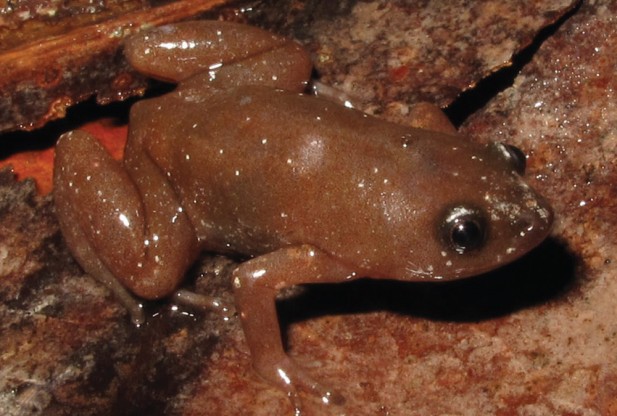Chiasmocleis on:
[Wikipedia]
[Google]
[Amazon]
''Chiasmocleis'' is a genus of

 The following species are recognised in the genus ''Chiasmocleis'':
The following species are recognised in the genus ''Chiasmocleis'':
microhylid
The Microhylidae, commonly known as narrow-mouthed frogs, are a geographically widespread family (biology), family of frogs. The 683 species are in 63 genera and 11 subfamilies, which is the largest number of genera of any frog family.
Evolution ...
frog
A frog is any member of a diverse and largely Carnivore, carnivorous group of short-bodied, tailless amphibians composing the order (biology), order Anura (ανοὐρά, literally ''without tail'' in Ancient Greek). The oldest fossil "proto-f ...
s. They are found in tropical South America
South America is a continent entirely in the Western Hemisphere and mostly in the Southern Hemisphere, with a relatively small portion in the Northern Hemisphere at the northern tip of the continent. It can also be described as the southe ...
north and east of the Andes
The Andes, Andes Mountains or Andean Mountains (; ) are the longest continental mountain range in the world, forming a continuous highland along the western edge of South America. The range is long, wide (widest between 18°S – 20°S ...
. Their common name is humming frogs or silent frogs, the latter referring to the formerly recognized ''Syncope''.
Taxonomy
There has been various attempts to delimit this genus in a way that would make itmonophyletic
In cladistics for a group of organisms, monophyly is the condition of being a clade—that is, a group of taxa composed only of a common ancestor (or more precisely an ancestral population) and all of its lineal descendants. Monophyletic gro ...
. As of mid 2021, it is recognized as including the former ''Syncope'', but consisting of three clade
A clade (), also known as a monophyletic group or natural group, is a group of organisms that are monophyletic – that is, composed of a common ancestor and all its lineal descendants – on a phylogenetic tree. Rather than the English term, ...
s ranked as subgenera:
Of these, ''Relictocleis'' is the most divergent and may even be considered a separate, monotypic genus, with ''Relictocleis gnoma'' as its sole member.

Description
''Chiasmocleis'' are small-bodied frogs with small limbs. They aresexually dimorphic
Sexual dimorphism is the condition where the sexes of the same animal and/or plant species exhibit different morphological characteristics, particularly characteristics not directly involved in reproduction. The condition occurs in most ani ...
, with males having darker chin, abundant to no dermal spines, and variable degree of pedal webbing. Subgenus ''Syncope'' is characterized by size reduction and reduction or loss of phalanges and digits. Also ''Relictocleis'' are particularly small.
Ecology
''Chiasmocleis'' arefossorial
A fossorial () animal is one adapted to digging which lives primarily, but not solely, underground. Some examples are badgers, naked mole-rats, clams, meerkats, and mole salamanders, as well as many beetles, wasps, and bees.
Prehistoric eviden ...
or semi-fossorial and well camouflaged among the leaf litter or underground. They only forage on the surface for a few days during periods of explosive breeding at the beginning of the rainy season. They occur in both forested and open environments.
Species
 The following species are recognised in the genus ''Chiasmocleis'':
The following species are recognised in the genus ''Chiasmocleis'':
References
{{Taxonbar, from=Q617865, from2=Q3533488 Microhylidae Amphibian genera Amphibians of South America Taxa named by Lajos Méhelÿ